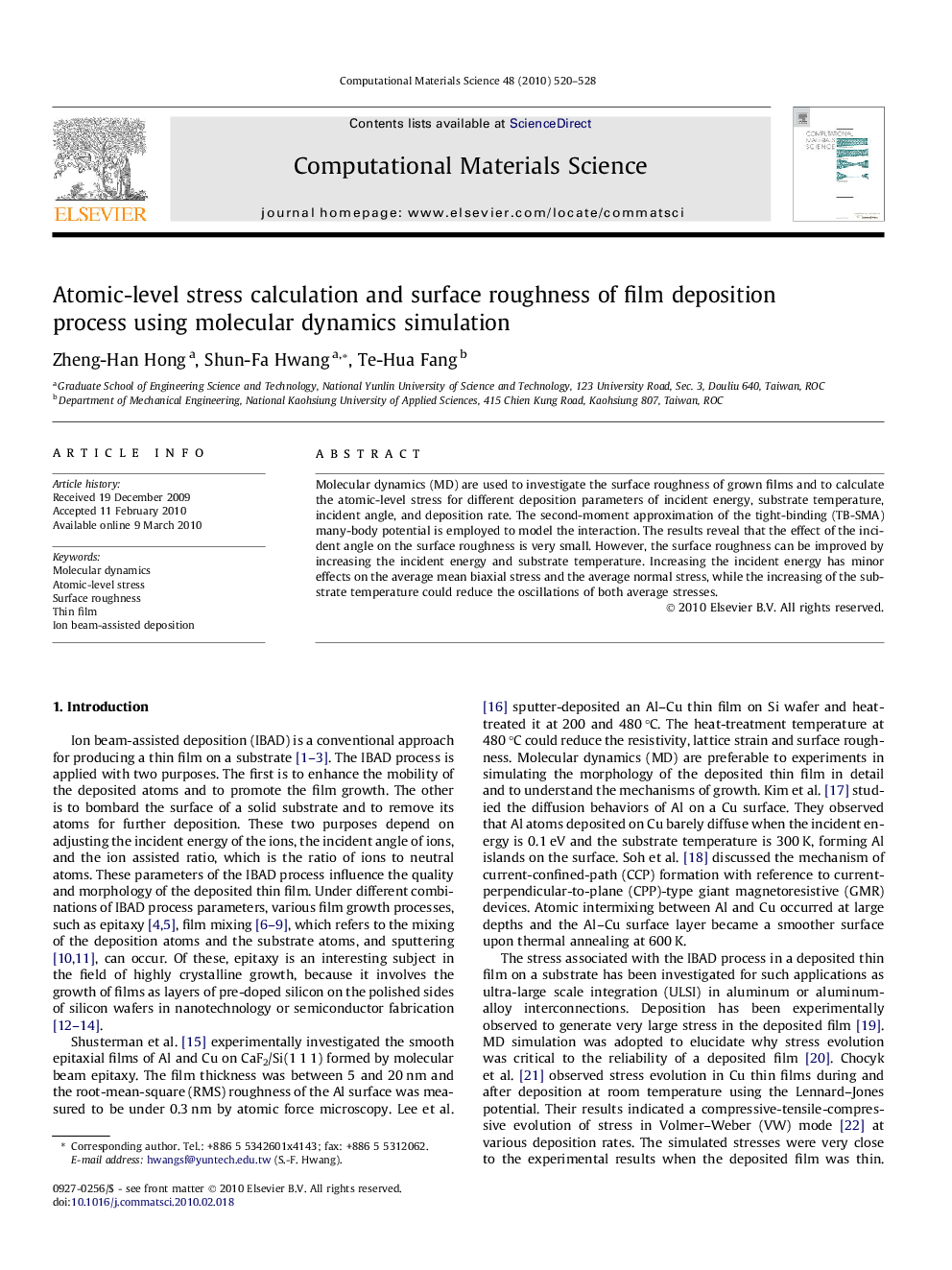| Article ID | Journal | Published Year | Pages | File Type |
|---|---|---|---|---|
| 1562627 | Computational Materials Science | 2010 | 9 Pages |
Molecular dynamics (MD) are used to investigate the surface roughness of grown films and to calculate the atomic-level stress for different deposition parameters of incident energy, substrate temperature, incident angle, and deposition rate. The second-moment approximation of the tight-binding (TB-SMA) many-body potential is employed to model the interaction. The results reveal that the effect of the incident angle on the surface roughness is very small. However, the surface roughness can be improved by increasing the incident energy and substrate temperature. Increasing the incident energy has minor effects on the average mean biaxial stress and the average normal stress, while the increasing of the substrate temperature could reduce the oscillations of both average stresses.
